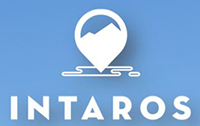| Number | Name | Description |
|---|---|---|
| D6.19 | Synthesis Report from WP6 | This is a synthesis of a number of application studies of Arctic Observing Systems towards Stakeholders, gives an overview of the activities, results and impacts of INTAROS Work Package 6 (WP6). The aim of WP6 is to demonstrate how an integrated observation system can be of specific benefit for society at local, regional or pan-Arctic scale. Through WP6 we show the capability of an enhanced… |
| D6.2 | Impact of climate change on Greenland ecosystems and fish resources, first report on decadal scale changes in fish community structure along the West Greenland coast | Based on summer trawls surveys along the West Greenland coast and shelf, the spatiotemporal |
| D6.20 | Observing systems for sea level in the Arctic | The Arctic Ocean is at the frontier of the fast-changing climate in the northern latitudes and sea level trends is a bulk measure of ongoing processes related climate change. Observations of sea level in the Arctic Ocean are nonetheless difficult to validate with independent measurements and is globally the region where the sea level change is most uncertain. |
| D6.21 | Sea ice and snow thickness from SIMBA buoy experiments | Snow depth and ice thickness in the Arctic Ocean directly result from air-sea ice-ocean interaction and their observational data are essential components of the iAOS. During INTAROS, an innovative and cost-cutting design thermistor string-based snow and ice mass balance apparatus (SIMBA) has been largely deployed in the Arctic Ocean to measure time series of high-resolution vertical… |
| D6.22 | Sea ice products from satellite scatterometers and passive microwave sensors | This report describes the work done at Ifremer on satellite remote sensing over sea ice using different microwave sensors, in particular work done in WP6 and linked to data delivered through WP2. We present and assess the data that have been prepared and/or improved (exploited) during the INTAROS project. This refers to data characterization, making the data accessible, creating new… |
| D6.23 | Sea ice and water vapor products from satellites | Deliverable D6.23 describes the work done mainly at the University of Bremen on satellite remote sensing of sea ice parameters and of total water vapor in the Arctic using microwave imagers (AMSR-E, AMSR2) and sounders (AMSU-B, MHS), i.e., work done in WP6 with links to data delivered through WP2. We present and assess the data that have been prepared, improved, and exploited during the… |
| D6.24 | Use of drones for sea ice observations | During the CAATEX KV Svalbard cruise 14/8–9/9, 2019 to the North Pole, NORCE operated a fixed-wing unmanned aircraft system (UAS), which was used to collect high-precision optical imagery, providing information about ice morphology and sea-ice properties. Furthermore, NORCE operated an ultra-wideband radar system on a multirotor UAS platform in collaboration with UiT and CIRFA. The radar,… |
| D6.3 | Extension of ecosystem management systems - v1 | The aim of D 6.3 is to use the existing environmental and fisheries reporting and management systems of the Barents Sea and off Greenland to demonstrate how data from an iAOS may allow for implementing similar procedures in other parts. In Case Barents Sea, established and proposed indicators by the Barents Sea management plan, are selected for modelling and the results evaluated. Here… |
| D6.4 | Report and model fields on ice-ocean state estimate in the Arctic Ocean | Based on Observing System Simultion Experiments, an evaluation is provided, first, of the capacity of the exist-ing Arctic Ocean observing system on capturing different aspects of the Arctic Ocean changes. Subsequently a 10-year ocean-sea ice synthsis is produced, by assimilating all available observations into a coupled ocean-sea ice mode using the adjoint method. |
| D6.5 | Risk Assessment System V1 | The motivation for developing an integrated risk assessment system is to provide insights and to simplify the process of integration, analysis and use of INTAROS data within Arctic marine risk assessments. This will support business planning and development in the Arctic region. An overview of information, products and services requested by users representing primarily the private commercial… |
